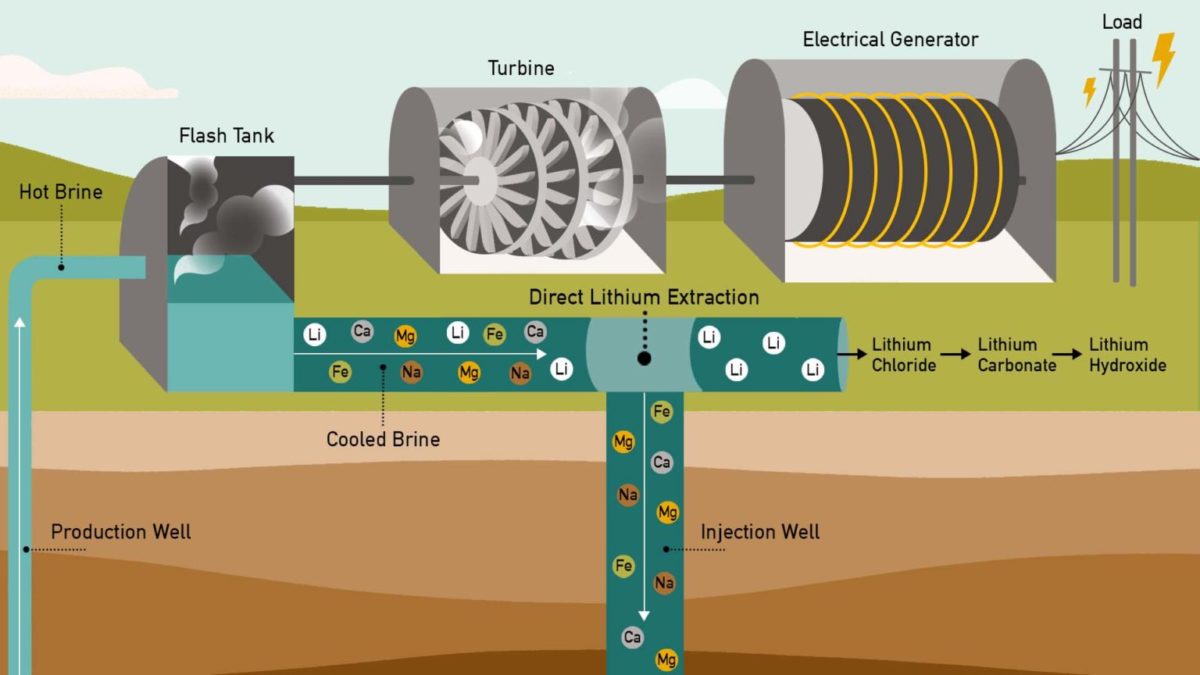From pv magazine USA
Lawrence Berkeley Laboratory is leading a research project to profile the concentration of lithium in the geothermal field beneath California’s Salton Sea, and to explore the most environmentally benign way to extract it.
Brine from the geothermal field is already pumped to the surface to generate geothermal power, and recirculated back underground. Lithium could be extracted from brine before it is pumped underground. Eleven geothermal plants are now operating in the Salton Sea, which Berkeley Lab describes as “pilot” operations.
With a back-of-the-envelope calculation, “you can convince yourself” that the geothermal field contains between 1 and 6 million metric tons of lithium, said UC Riverside geochemist Michael McKibben. McKibben is a researcher on the project who has studied the geothermal field since the 1970s.
The Salton Sea geothermal system is “a world-class resource,” agreed lead investigator Pat Dobson with Berkeley Lab. He pointed to several key unknowns: the size of the resource, the rate at which it would decline over time with the extraction of lithium, and whether it would be replenished by the remaining lithium in the host rocks.
The study aims to answer those questions, with a $1.2 million research grant from the U.S. Department of Energy’s Geothermal Technologies Office. The federal government is the largest owner of land under the Salton Sea.
“We need better data on the chemistry of the brines and their lithium content,” said McKibben, “and how it’s distributed in terms of position and depth in the geothermal field.” With that information, combined with existing field data, the research team aims to estimate how much lithium could be in brine in parts of the field that remain untapped, he said.
The researchers have asked geothermal companies operating in the region to share their brine data. Berkshire Hathaway Energy, the owner of most of the geothermal plants in the region, has pledged to work with the research team.
Across the U.S., annual production of lithium from geothermal brine could reach 56,000 to 1.5 million metric tons of lithium carbonate equivalent (LCE), as estimated by Idaho National Laboratory researchers. That compares to global LCE production forecasts of 615,000 metric tons in 2022 and 821,000 metric tons in 2023 prepared by Australia’s Department of Industry.
“We think geothermal lithium is one of the least environmentally impactful ways of obtaining lithium,” said Dobson. The Berkeley Lab study will evaluate how to mitigate “environmental side effects to make it even more benign,” he said.
Almost all the land under the Salton Sea is owned by three entities: the federal government, California’s Imperial Irrigation District, and the Torres Martinez Desert Cahuilla Indians.
Berkeley Lab will convene a National Energy Storage Summit in March, including a three-hour session on “building out a domestic lithium resource.”
This content is protected by copyright and may not be reused. If you want to cooperate with us and would like to reuse some of our content, please contact: editors@pv-magazine.com.



1 comment
By submitting this form you agree to pv magazine using your data for the purposes of publishing your comment.
Your personal data will only be disclosed or otherwise transmitted to third parties for the purposes of spam filtering or if this is necessary for technical maintenance of the website. Any other transfer to third parties will not take place unless this is justified on the basis of applicable data protection regulations or if pv magazine is legally obliged to do so.
You may revoke this consent at any time with effect for the future, in which case your personal data will be deleted immediately. Otherwise, your data will be deleted if pv magazine has processed your request or the purpose of data storage is fulfilled.
Further information on data privacy can be found in our Data Protection Policy.